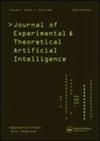一种基于深度学习的痴呆知识发现弹性网络正则化新解决方案
IF 1.7
4区 计算机科学
Q3 COMPUTER SCIENCE, ARTIFICIAL INTELLIGENCE
Journal of Experimental & Theoretical Artificial Intelligence
Pub Date : 2021-08-21
DOI:10.1080/0952813X.2021.1970237
引用次数: 2
摘要
磁共振图像(MRI)的准确分类对于准确预测轻度认知障碍(MCI)向阿尔茨海默病(AD)的转化至关重要。同时,深度学习在痴呆症分类和预测方面也得到了成功的应用。然而,MRI图像分类的准确率较低。本文旨在通过深度学习架构,在特征选择中使用弹性网正则化,提高分类的准确率,减少分类的处理时间。该系统由卷积神经网络(CNN)组成,通过弹性网络正则化来提高分类和预测的精度。首先,将MRI图像输入CNN,通过卷积层与池化层交替进行特征提取,然后通过全连接层进行特征提取。然后,对提取的特征进行主成分分析(PCA)和弹性网正则化进行特征选择。最后,选择的特征被用作极限机器学习(EML)的输入,用于MRI图像的分类。结果表明,该方法的精度优于现有系统。此外,该方法将分类精度平均提高了5%,处理时间平均缩短了30 ~ 40秒。该系统旨在提高MCI转换/非转换分类的准确性和处理时间。它包括特征提取、特征选择和分类,使用CNN、FreeSurfer、PCA、Elastic Net和Extreme Machine Learning。最后,本研究利用弹性网正则化方法提高了分类的准确率和处理时间,为分类提供了重要的选择特征。本文章由计算机程序翻译,如有差异,请以英文原文为准。
A novel solution of an elastic net regularisation for dementia knowledge discovery using deep learning
ABSTRACT Accurate classification of Magnetic Resonance Images (MRI) is essential to accurately predict Mild Cognitive Impairment (MCI) to Alzheimer’s Disease (AD) conversion. Meanwhile, deep learning has been successfully implemented to classify and predict dementia disease. However, the accuracy of MRI image classification is low. This paper aims to increase the accuracy and reduce the processing time of classification through Deep Learning Architecture by using Elastic Net Regularisation in Feature Selection. The proposed system consists of Convolutional Neural Network (CNN) to enhance the accuracy of classification and prediction by using Elastic Net Regularisation. Initially, the MRI images are fed into CNN for features extraction through convolutional layers alternate with pooling layers, and then through a fully connected layer. After that, the features extracted are subjected to Principle Component Analysis (PCA) and Elastic Net Regularisation for feature selection. Finally, the selected features are used as an input to Extreme Machine Learning (EML) for the classification of MRI images. The result shows that the accuracy of the proposed solution is better than the current system. In addition to that, the proposed method has improved the classification accuracy by 5% on average and reduced the processing time by 30 ~ 40 seconds on average. The proposed system is focused on improving the accuracy and processing time of MCI converters/non-converters classification. It consists of features extraction, feature selection, and classification using CNN, FreeSurfer, PCA, Elastic Net, and Extreme Machine Learning. Finally, this study enhances the accuracy and the processing time by using Elastic Net Regularisation, which provides important selected features for classification.
求助全文
通过发布文献求助,成功后即可免费获取论文全文。
去求助
来源期刊
CiteScore
6.10
自引率
4.50%
发文量
89
审稿时长
>12 weeks
期刊介绍:
Journal of Experimental & Theoretical Artificial Intelligence (JETAI) is a world leading journal dedicated to publishing high quality, rigorously reviewed, original papers in artificial intelligence (AI) research.
The journal features work in all subfields of AI research and accepts both theoretical and applied research. Topics covered include, but are not limited to, the following:
• cognitive science
• games
• learning
• knowledge representation
• memory and neural system modelling
• perception
• problem-solving

 求助内容:
求助内容: 应助结果提醒方式:
应助结果提醒方式:


